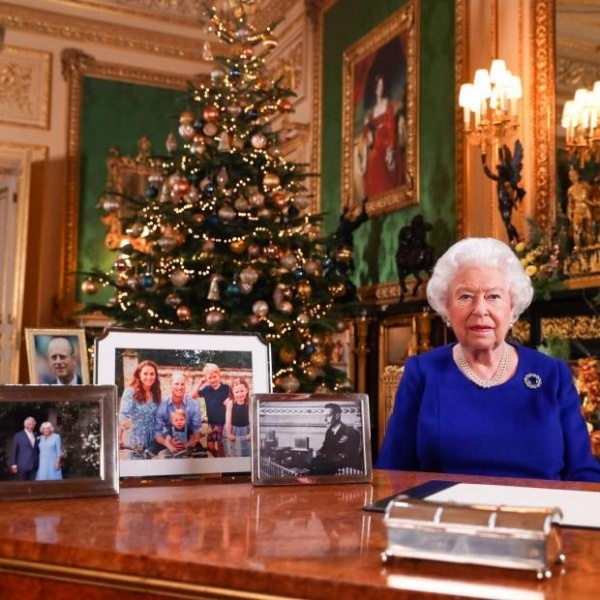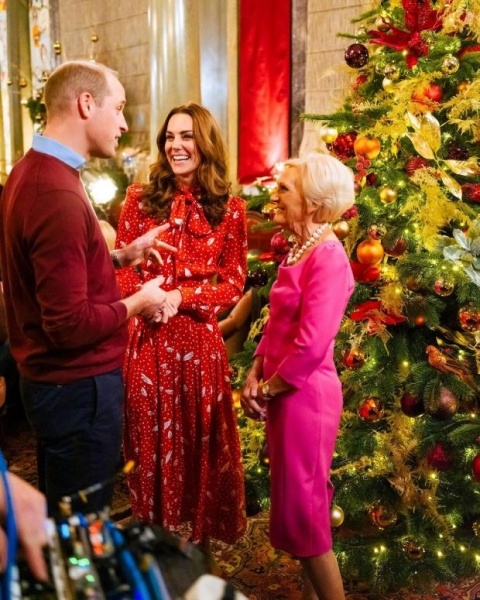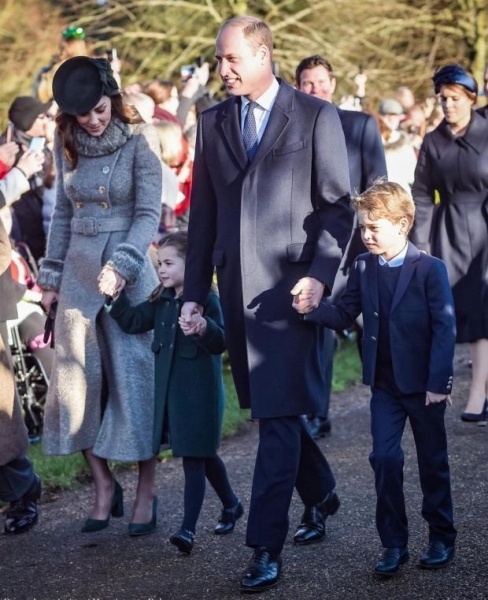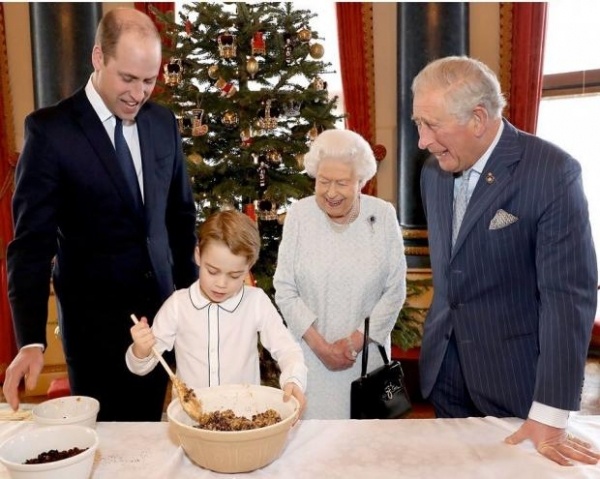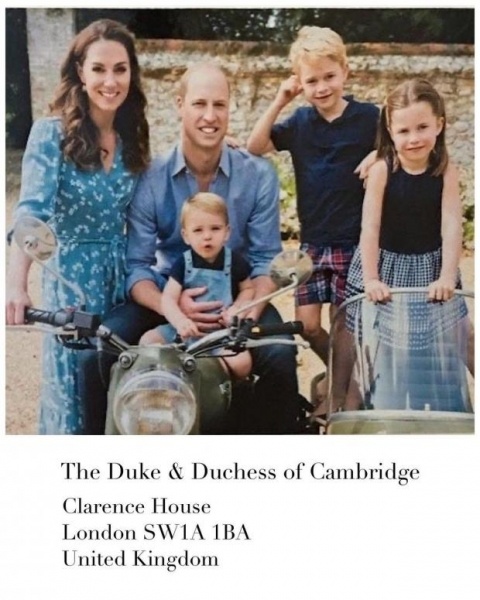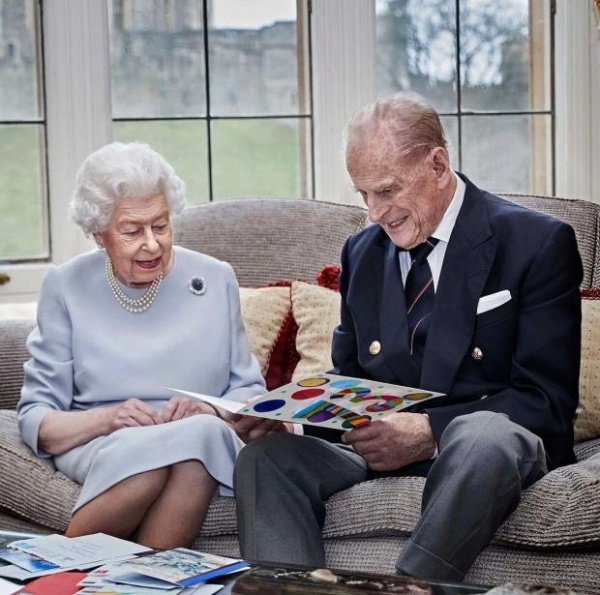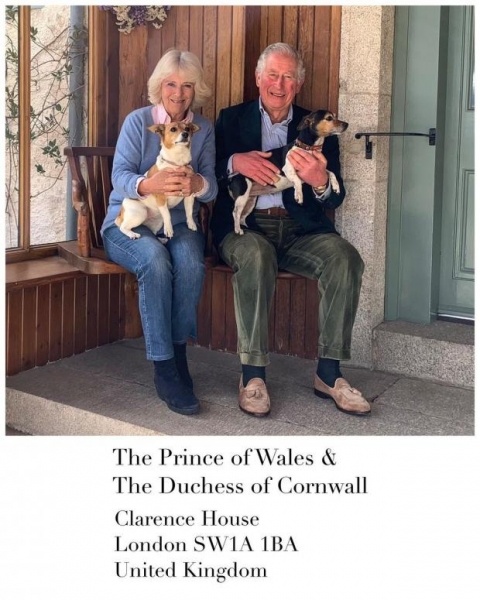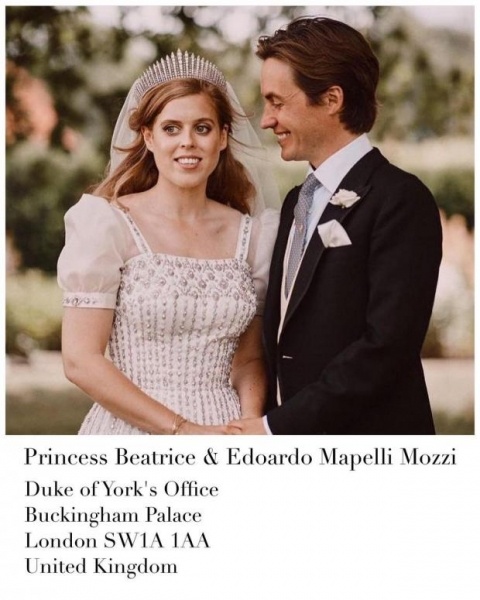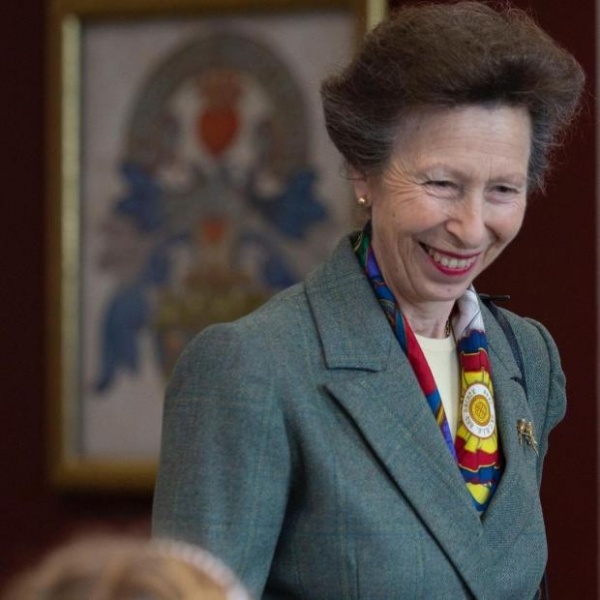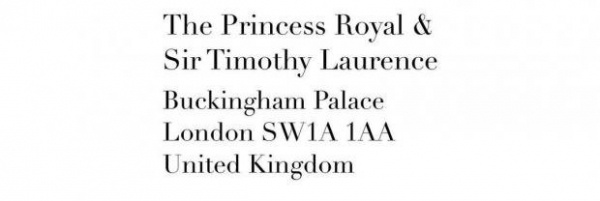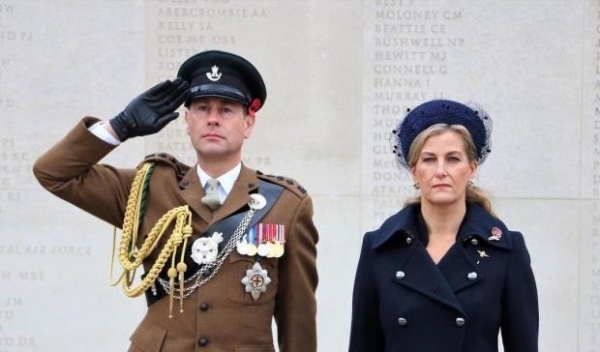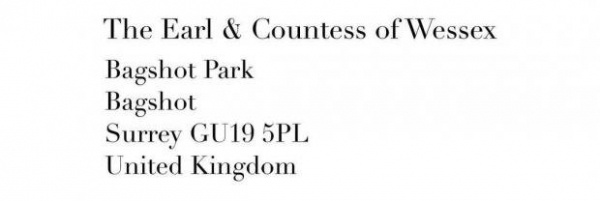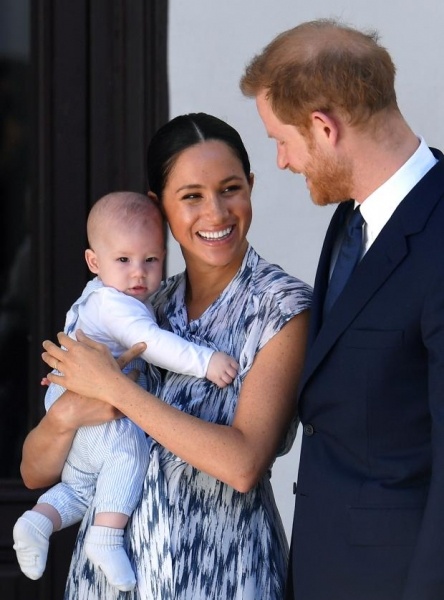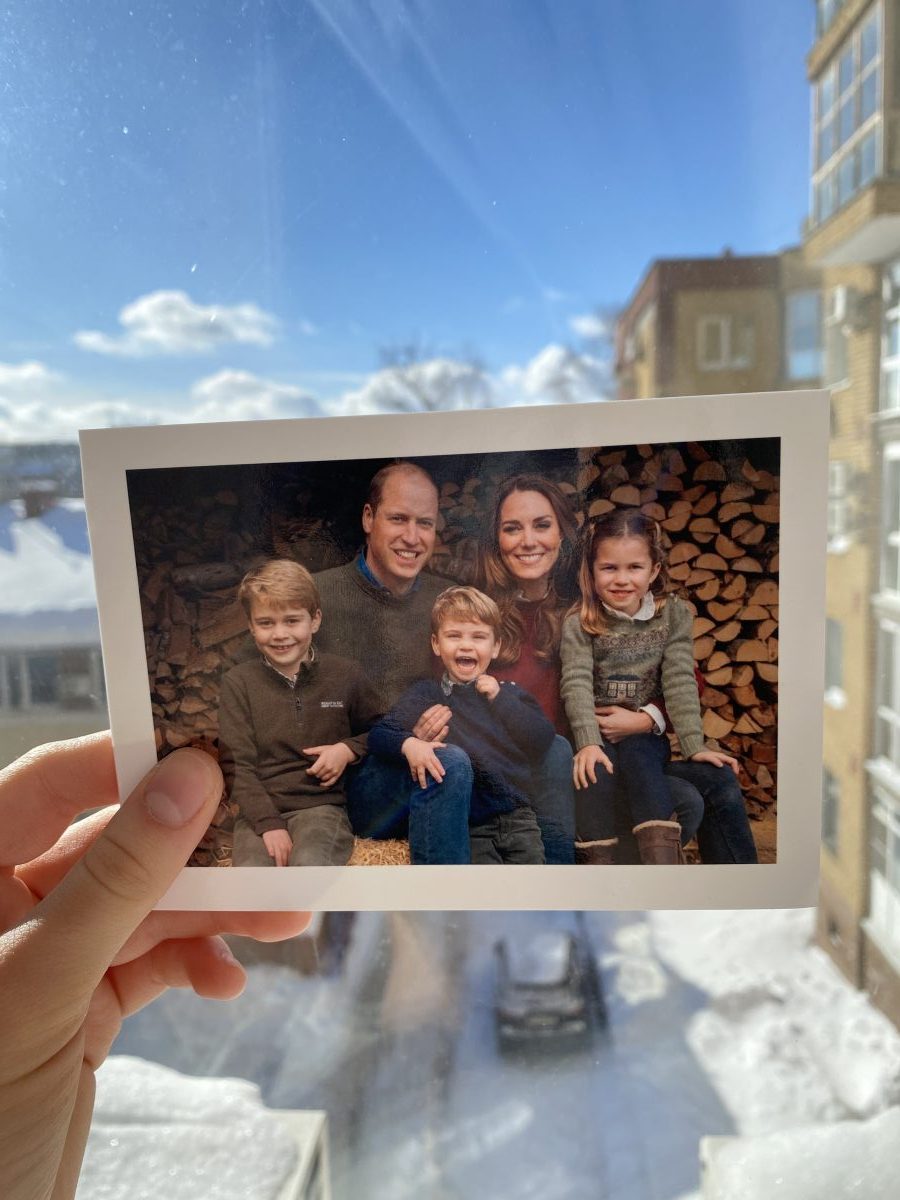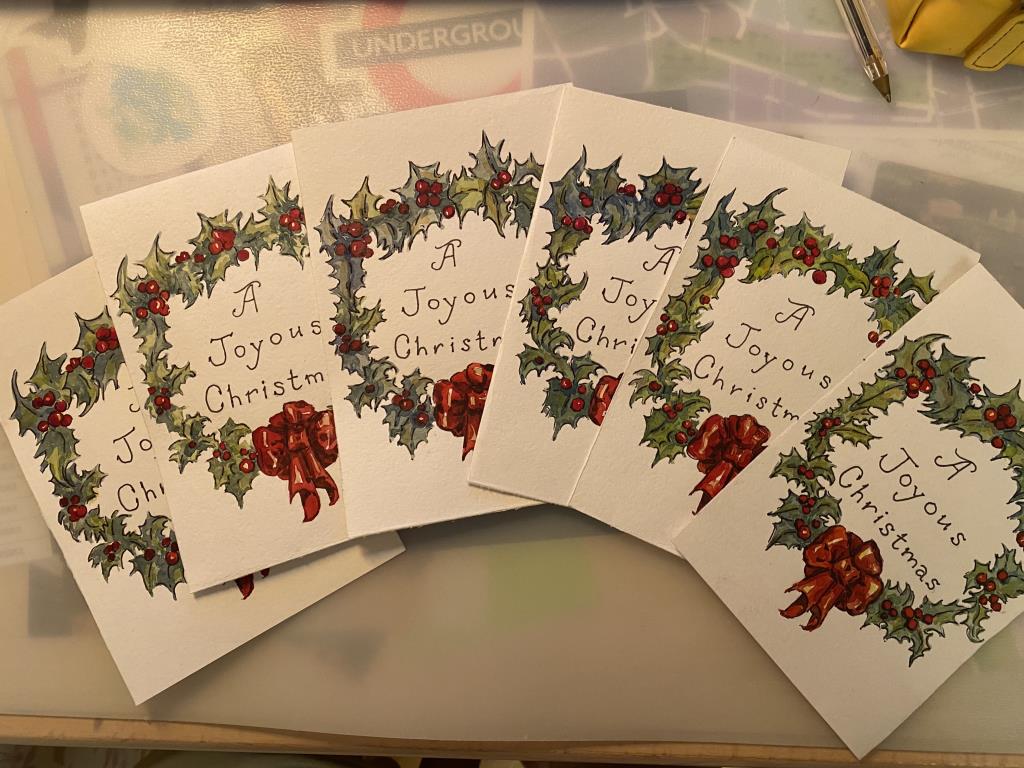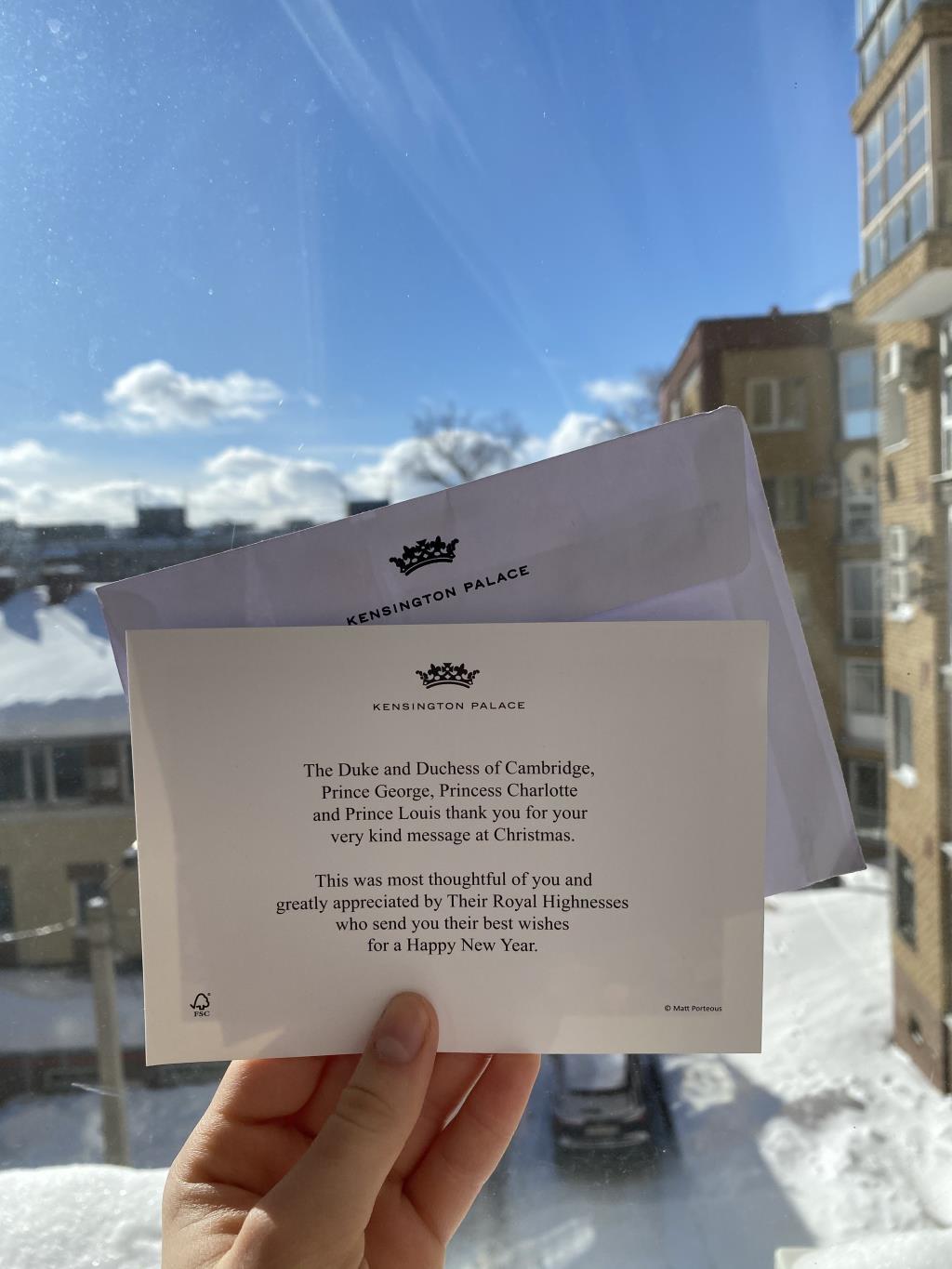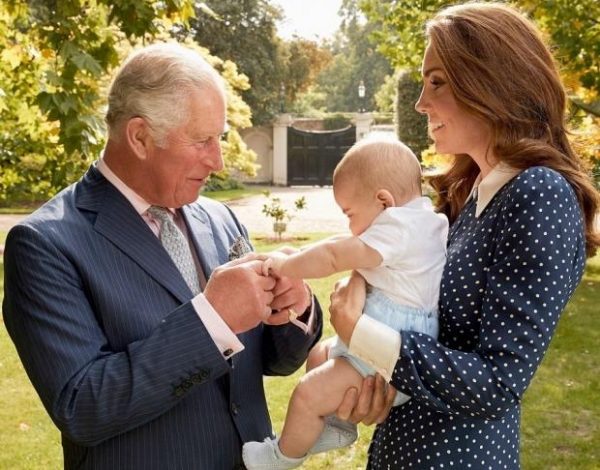
Каждый год члены королевской семьи выпускают рождественские открытки, и каждый желающий может получить ее. Для этого нужно отправить письмо любимой королевской особе по определенному адресу.
Поклонники с нетерпением ждут, когда члены королевской семьи Великобритании выпустят официальные рождественские открытки. Ежегодно Елизавета II и Принц Филипп, Принц Чарльз и Камилла, Принц Уильям и Кэтрин с детьми, и даже Принц Гарри с женой и сыном публикуют новые семейные фотографии, которые становятся основой для поздравительных открыток.
Ежегодно в период рождественских и новогодних праздников персонал королевского семейства получает тысячи писем. В ответ они отправляют заранее подготовленную открытку – фотографию семьи или того или иного члена королевской семьи, кому было адресовано письмо почитателя, с напечатанными на обратной стороне благодарственными словами.
Когда лучше писать письма?
Лучше отправлять почту в начале декабря, чтобы ваша открытка и письмо успели прийти в срок, а королевский персонал побыстрее ее рассмотрел. Самые лучшие письма попадают в руки Их Королевских Высочеств.
Ответ зачастую приходит в январе или феврале, но иногда и позже.
Что писать королевским особам?
Нет никаких правил относительно того, что нужно писать. Вместе с рождественскими и новогодними поздравлениями, можно упомянуть о проекте, над которым работали королевские особы или который произвел на вас наибольшее впечатление. Можно написать о том, что вам больше всего нравится в том или ином человеке.
Расскажите коротко о себе в письме, и поделитесь лучшим днем в году, например, свадьбой или рождением детей.
Например, если вы пишете герцогу и герцогине Кембриджским можно выразить соболезнования по поводу смерти их любимого питомца Люпо, который умер в ноябре 2020 года. В письме к Кэтрин можно поздравить ее с предстоящим днем рождения – 9 января.
Адреса членов королевской семьи
Герцог и герцогиня Кембрджские
Елизавета II и Принц Филипп
Принц Чарльз и Камилла
Принцесса Евгения и Джек Бруксбэнк
Принцесса Беатрис и Эдоардо Мапелли Моцци
Принцесса Анна
Принц Эдвард и Софи
Принц Гарри и Меган Маркл
Несмотря на то, что Принц Гарри и Меган Маркл вышли из числа королевской семьи, их корреспонденцию все равно обрабатывают сотрудники Кларенс-Хауса. Если же до конца года пара не сообщит свой новый адрес в США, спокойно можно отправлять письма в Англию.
Источник
Нижегородская школьница Мария Неклюдова получила открытку от герцога и герцогини Кембриджских Уильяма и Кейт в ответ на поздравления с Рождеством и Новым годом.
«Я всегда увлекалась Royal семьей, в Англию ездила. И когда узнала, что они присылают каждый год новогодние открытки разные, решила попробовать написать. Посмотрела на YouTube видео, но их мне не хватило. Затем пошла в интернет с поисками. Это было сложно – узнать сами правила, как сделать так, чтобы письма точно дошли», — делится Мария Неклюдова, — «Нашла некоторые правила на сайте самой Royal семьи, Букингемского дворца. Там были опубликованы правильные адреса и обращения к королевским особам. Посмотрела примеры писем от других людей. В России мало кто этим занимается, поэтому пришлось искать за рубежом. Я писала что-то более личное. Например, герцогу и герцогине Кембриджским я написала достаточно большое письмо про то, как мне нравятся их семейные отношения и то, что они занимаются благотворительностью. Для меня это действительно важно».
Мария сама нарисовала поздравительные открытки, чтобы привлечь внимание королевских особ.
5 декабря письма с открытками королевской семье были отправлены. И спустя 2,5 месяца первый ответ все же пришел — Мария получила королевскую открытку. Их из дворца присылают реже, чем официальную бумагу с печатью и поздравлениями.
Теперь Мария мечтает получить ответы и от остальных адресатов. Она написала еще королеве и принцу Филиппу, принцу Уэльскому Чарльзу с Камиллой, а также принцессе Беатрис и принцессе Евгении. Одна в прошлом году вышла замуж, у другой родился ребенок. С этими радостными событиями девушка их тоже не забыла поздравить.
Как писать письма королевским особам
Мария поделилась с редакцией сайта «Нижегородская правда» несколькими хитростями, которые помогли ее письмам быстрее дойти до пункта назначения в другом государстве:
— Писать сразу на английском. Если уровень владения языком недостаточно хороший, то можно в поисковике подсмотреть готовые иностранные поздравления, проверить перевод и выбрать подходящий вариант для собственного письма.
— Придерживаться норм написания письма. Существуют определенные правила, с чего нужно начать, какие приветствия уместны в конкретных ситуациях, что должно быть в поздравлении и в правильном окончании.
— При отправлении важно соблюдать порядок в адресе. На конверте адрес можно записать по-русски, а на самом письме стоит продублировать адрес уже на английский манер.
— Королевских особ можно поздравить не только с известными праздниками вроде Нового года и Рождества, но и с личными значимыми событиями (такими как рождение ребенка или свадьба).
— Содержания писем могут сильно отличаться: кто-то изливает душу и признается собеседникам, на что они его вдохновили, другие предпочитают рассказывать что-то про себя. Допустимо и просто небольшое поздравление. Главное — не слишком сухое, иначе ответ может так и не прийти.
Как написать письмо британской королевской семье и получить ответ?
Каждый год тысячи поклонников монаршей семьи отправляют письма в официальные резиденции наследников короны, чтобы поздравить их с днём рождения, Рождеством или просто выразить своё уважение. А некоторые счастливчики даже получают ответ от королевских особ.

Legion-Media
Отправить письмо можете и вы. Для этого нужно лишь знать базовые основы английского языка и почтовые адреса членов королевской семьи, которые можно найти в нашем материале.
У королевской семьи есть множество традиций, которым они следуют на протяжении нескольких веков, и одна из них — вести бумажную корреспонденцию. Как многим известно, связаться с монаршими особами по почте могут не только их знакомые или государственные и политические деятели, но и обычные люди со всего мира.
РЕКЛАМА – ПРОДОЛЖЕНИЕ НИЖЕ
Больше всего писем от поклонников получала, конечно, королева. Елизавете II приходило более 70 тыс. писем в год, т. е. около 200 штук в день. Можно предположить, что из-за своей загруженности она даже не притрагивалась к ним, но это совершенно не так. Согласно сайту королевской семьи, Её Величество «ежедневно просматривала почти всю свою корреспонденцию». И иногда даже отвечала на некоторые из писем. За остальные послания королеве несли ответственность её секретари и фрейлины.
РЕКЛАМА – ПРОДОЛЖЕНИЕ НИЖЕ
Как известно, новоиспечённый монарх Карл III также заинтересован в общении с поклонниками. «Один из личных секретарей короля ежедневно показывает почти всю его корреспонденцию, и он проявляет большой интерес к получаемым письмам», — указано на официальном сайте королевской семьи.
Стиль и тема письма королевской семье
РЕКЛАМА – ПРОДОЛЖЕНИЕ НИЖЕ
РЕКЛАМА – ПРОДОЛЖЕНИЕ НИЖЕ
Не существует абсолютно четких правил насчет того, как должно быть написано письмо, однако лучше придерживаться официального тона. Также оно не должно быть слишком личным, хотя вы вполне можете рассказать немного о себе, чтобы придать контекст вашему письму.
«Чувствуйте себя свободно и пишите в том стиле, в котором вам удобно», — советуют сотрудники Букингемского дворца.
Как правило, письма Виндзорам отправляют в преддверии какого-либо праздника, например, Рождества и Нового года, Пасхи, дня рождения членов королевской семьи или годовщины свадьбы. Тогда вы вполне можете и получить открытку, которая была выпущена в честь этого события.
РЕКЛАМА – ПРОДОЛЖЕНИЕ НИЖЕ
Как обращаться к членам королевской семьи в письме?
Если вы пишете члену королевской семьи, который ноcит титул Его или Ее Королевского Высочества, стоит начать письмо с обращения Your Royal Highness («Ваше Королевское Высочество»), Your Royal Highnesses (например, обращаясь к супружеской паре), Madam или Sir. Затем при обращении к королевским особам используйте Ma’am, а к мужчинам – Sir.
РЕКЛАМА – ПРОДОЛЖЕНИЕ НИЖЕ
РЕКЛАМА – ПРОДОЛЖЕНИЕ НИЖЕ
Если пишете королю, начните письмо со слов Your Majesty («Ваше Величество») или Sir. Завершите письмо фразой Yours sincerely,… («Искренне ваш,…») или Sincerely,… («С уважением,…»).
Что можно и нельзя писать в письме королевской семье?
Ответ из Букингемского дворца от королевы
Legion-Media
Чтобы письмо точно дошло до адресата, по соображениям безопасности лучше не класть ничего лишнего в конверт, кроме письма и, к примеру, детского рисунка. Любые подарки, отправленные королевским особам, вам, скорее всего, вернут.
РЕКЛАМА – ПРОДОЛЖЕНИЕ НИЖЕ
Королю не стоит задавать вопросы, касающиеся политики и личной жизни. «Будучи конституционным монархом, Его Величество не вмешивается ни в какие политические или личные споры, и на письма с просьбой об этом будет дан стандартный ответ», – указано на сайте королевской семьи.
Как и где указывать свой адрес?
РЕКЛАМА – ПРОДОЛЖЕНИЕ НИЖЕ
РЕКЛАМА – ПРОДОЛЖЕНИЕ НИЖЕ
Свои данные с адресом лучше написать как на конверте, так и в самом письме подобным образом:
- Ivan Ivanov
- 111 Mira Street, Apt. 1
- Moscow
- Russian Federation
- 101000
Почтовые адреса членов королевской семьи
Король Карл III и королева-консорт Камилла
- Their Majesties The King and The Queen Consort
- Buckingham Palace
- London
- SW1A 1AA
- United Kingdom
РЕКЛАМА – ПРОДОЛЖЕНИЕ НИЖЕ
Принц Уильям и принцесса Кэтрин
- Their Royal Highnesses The Prince and Princess of Wales
- Kensington Palace
- London
- W8 4PU
- United Kingdom
Принц Эндрю
- His Royal Highness The Duke of York
- Buckingham Palace
- London
- SW1A 1AA
- United Kingdom
Принц Эдвард и графиня Уэссекская Софи
- Their Royal Highnesses The Earl and Countess of Wessex
- Bagshot Park
- Bagshot
- Surrey
- GU19 5PL
- United Kingdom
Принцесса Анна
- Her Royal Highness The Princess Royal
- Buckingham Palace
- London
- SW1A 1AA
- United Kingdom
Принцессы Евгения и Беатрис
- Buckingham Palace
- London
- SW1A 1AA
- United Kingdom
Когда должен прийти ответ от королевской семьи?
РЕКЛАМА – ПРОДОЛЖЕНИЕ НИЖЕ
РЕКЛАМА – ПРОДОЛЖЕНИЕ НИЖЕ
Несомненно, самое сложное во всем этом процессе – ожидание ответа. Его можно получить как спустя 3-4 месяца, так и не получить вовсе. Дело в том, что, учитывая большое количество писем, королевская семья не успевает ответить всем.
Однако вы можете повысить свои шансы, если правильно оформите письмо и конверт, будете вежливыми, сможете заинтересовать королевскую особу и задать несколько вопросов. Также стоит отправлять письмо заранее – примерно за месяц до события, к которому приурочено письмо.

Новости монархов
Из года в год настоящие поклонники королевских семей Европы отправляют им письма, открытки и подарки в честь наступающего католического Рождества. В качестве приятного бонуса за такое неравнодушие — ответная открытка с подписью и портретом, например, Ее Величества Великобритании. Если вы — в числе таких же фанатов, и вам не терпится поздравить Елизавету II, Кейт Миддлтон и принца Уильяма, Меган Маркл и принца Гарри или же княгиню Монако Шарлен, королеву Испании Летицию, королеву Нидерландов Максиму и многих других, то предлагаем воспользоваться нашей подборкой их почтовых адресов.
Великобритания
Принцу Чарльзу и герцогине Камилле, принцу Уильяму и Кейт Миддлтон, принцу Гарри и Меган Маркл:
Clarence House London SWA1A 1BA United Kingdom
Королеве Елизавете, принцу Филиппу, принцессе Анне, принцу Эндрю и принцессам Евгении, Беатрис:
Buckingham Palace London SW1A 1AA United Kingdom
Принцу Эдварду и графине Софии:
Bagshot Park Bagshot Surrey GU19 5PL United Kingdom
Швеция
Королю Карлу Густаву и королеве Сильвии, кронпринцессе Виктории и принцу Даниэлю, принцессе Мадлен и Крису О’Нилу:
Kungl. Slottet
SE-107 70 Stockholm
Sweden
Дания
Королеве Маргрете II, кронпринцу Даниэлю и кронпринцессе Мэри:
Postboks 2143
1256 København K
Denmark
Испания
Королю Филиппу и королеве Летиции:
Palacio de La Zarzuela
Carretera del Pardo s/n
28071 Madrid
Spain
Монако
Князю Альберу II и княгине Шарлен:
Palais Princier de Monaco
B.P. 518
MC 98015 Monaco Cedex
Monaco
Норвегия
Королю Харальду V и королеве Соне, принцу Хокону и принцессе Метте-Марит, принцессе Марте-Луизе:
Det Kongelige Hoff
Det Kongelige Slott Postbox 1 Vika
0010 Oslo Norway
Нидерланды
Королю Виллему-Александру и королеве Максиме:
Noordeinde Palace
Postbus 30412
2500 GK Den Haag
Nederland
Читайте также
Download Article
Download Article
A long history of etiquette establishes how to show respect to a member of the British aristocracy. In the modern day, no one requires these courtesies, and you’re unlikely to annoy the noble as long as you are polite. However, if you would like to avoid embarrassment at a formal event, it only takes a moment to discover the preferred mode of address of the other guests.
Formal Address Cheat Sheet
-
1
Greet royalty with a small bow or curtsy. These are the most formal greetings, but they are never required, even for subjects of the King. If you are a man and you choose this approach, bow your head slightly at the neck.[1]
If you are a woman, give a small curtsy: put your right foot behind your left, then briefly bend at the knees while keeping your upper body and neck vertical.[2]
- Deep curtsies are not a faux pas, but they are uncommon and difficult to do gracefully.[3]
Deep bows from the waist, on the other hand, are never performed in this situation. - Perform this greeting when the royal family member passes by you, or when you are presented.[4]
- Deep curtsies are not a faux pas, but they are uncommon and difficult to do gracefully.[3]
-
2
Consider a small nod or bob instead. Instead of bowing or curtsying, you may give a small nod (traditionally male) or bob by briefly bending your knees (female). This is a typical choice for people who are not citizens of the Commonwealth, since they have no fealty to British royalty.[5]
This is also perfectly acceptable for Commonwealth citizens.[6]
Advertisement
-
3
Shake hands only if the offer is extended. The Royal Family’s website states that shaking hands is also an acceptable form of greeting, alone or in addition to one of the modes above.[7]
However, you should wait for the Royal Family Member to extend his or her hand first, and use only a light touch with one hand.[8]
Do not initiate any physical contact yourself.- If you are wearing dress gloves (which is certainly not required), men should remove the gloves before shaking hands, while women may leave them on.[9]
- If you are wearing dress gloves (which is certainly not required), men should remove the gloves before shaking hands, while women may leave them on.[9]
-
4
Let the royal personage take the lead in conversation. Wait until he or she greets you before you speak. Avoid changing the subject, and do not ask any personal questions.[10]
- Foreigners should resist the urge to speak «proper» if it comes across as an imitation of an English accent. The King and his relatives have spoken with thousands of people around the world, and do not expect you to speak as they do.
-
5
Use the full formal address in your first reply. If addressed by royalty, your first response should end with the long form of respectful address. For example, if the King asks you «How are you enjoying the United Kingdom?» you could respond, «It’s wonderful, Your Majesty.» For all other members of the royal family besides the King, your first response should use «Your Royal Highness» instead.[11]
-
6
Use short forms of address for the rest of the conversation. All female members of the Royal Family, should be addressed as «Ma’am», with a short «a» as in «jam». Address all male members as «Sir».[12]
- If you mention a royal family member in the third person, always use a full title (such as «The Prince of Wales») or «His/Her Royal Highness». Referring to someone by name («Prince Philip» ) may be considered rude.[13]
- Note that the correct title for the King is «His Majesty the King». Avoid «King of England», as that is just one of many titles that refer to a specific country.
- If you mention a royal family member in the third person, always use a full title (such as «The Prince of Wales») or «His/Her Royal Highness». Referring to someone by name («Prince Philip» ) may be considered rude.[13]
-
7
Repeat the same greeting when the Royal Family member leaves. Use the same bow, curtsy, or less traditional greeting as a respectful farewell when the meeting comes to an end.[14]
-
8
Contact the Royal Household if you have further questions. The staff of the Royal Household is happy to answer etiquette questions. If you are not sure of the preferred title for a particular royal, or the expectations for hosting a particular event, enquire by post or telephone:[15]
- (+44) (0)20 7930 4832
- Public Information Officer
Buckingham Palace
London SW1A 1AA
Advertisement
-
1
Address dukes and duchesses by title. These belong to the highest grade of peerage. Address them as «Duke» or «Duchess». After the initial greeting, you may address them the same way or as «Your Grace».
- As with any title, you do not need to include the location («Duke of Mayfair») unless it is necessary to avoid confusion.
- If you are making a formal introduction, say «His/Her Grace the Duke/Duchess» followed by the rest of the title.
-
2
Refer to all lower ranks by Lady and Lord. In conversation and verbal introductions, avoid reference to all other titles besides Duke or Duchess. Use «Lady» and «Lord» instead, followed by the last name.[16]
The following titles are only used in formal or legal correspondence:- Marchioness and Marquis
- Countess and Earl
- Viscountess and Viscount
- Baroness and Baron
-
3
Address the peer’s children by courtesy titles. This can get slightly complicated, so look up the exact scenario below:
- Address the son of a duke or marquess as «Lord» followed by the first name.
- Address to the daughter of a duke, marquess, or earl as «Lady» followed by the first name.
- If you will be meeting a peer’s heir apparent (generally the eldest son), look up his title. He will often use a secondary title of his father’s, which is always of a lower rank.
- In all other cases, the child has no special title. («The Hon.» is used only in writing.)
-
4
Speak with baronets and knights. Use the following guide when talking to someone who holds these non-noble distinctions:
- Baronet or Knight: «Sir» followed by the first name
- Baronetess and Dame: «Dame» followed by the first name
- Wife of a baronet or knight: «Lady» followed by the first name
- Husband of a baronetess or dame: no special title[17]
Advertisement
Add New Question
-
Question
How do I address a royal prince?
At first meeting he is address with Your Royal Highness, and Sir thereafter.
-
Question
What happens if you accidentally say something or act impolite?
In all honesty, just apologize.
-
Question
When do you use the title «Your ladyship»?
When you address a lady or countess (wife of an earl). If you would normally say ‘you’ in the context, then substitute it for ‘your ladyship’. For example: «Have you finished lunch yet?» would become «Has your ladyship finished lunch yet?».
See more answers
Ask a Question
200 characters left
Include your email address to get a message when this question is answered.
Submit
Advertisement
-
If you are giving a speech for the King, begin with «May it please Your Majesty» and conclude with «Ladies and gentlemen, I ask you to rise and join me in a toast to The King!»[18]
-
The King occasionally grants knighthoods to non-subjects, but these honors do not add a title. In other words, address an English knight as «Sir» but an American knight as «Mr».[19]
-
The person’s own expressed preference about how they would like to be addressed overrides the general rules.
Show More Tips
Thanks for submitting a tip for review!
Advertisement
-
If you are caught unprepared, it’s probably better to admit ignorance rather than «winging it.» If possible, ask a protocol officer or another un-ranked or lower-ranked person.
-
This article deals specifically with meeting British peers and royalty. Aristocracies in other countries may have different etiquette, and (unlike the British) may punish you for failing to observe the correct codes of behavior.
Advertisement
References
About This Article
Article SummaryX
To formally address British royalty and aristocracy in person, give a small nod if you’re a male, or a brief bob by bending slightly at the knees if you’re a female. Then, let them initiate the conversation and use the full formal address in your initial reply, such as “Yes, your majesty,” for a royal member. With members of the aristocracy, address Dukes and Duchesses as “Your Grace,” and all lower ranking members like Barons and Earls as “”Lord” and “Lady.” After the initial response, you can use “Ma’am” or “Sir” for the rest of the conversation. To learn more, including how to address members with non-noble titles, like baronets and knights, read on!
Did this summary help you?
Thanks to all authors for creating a page that has been read 621,258 times.
Reader Success Stories
-
«Thanks so much for this lifesaving article! While not actually meeting British nobility, I am writing about them,…» more
Did this article help you?
Download Article
Download Article
A long history of etiquette establishes how to show respect to a member of the British aristocracy. In the modern day, no one requires these courtesies, and you’re unlikely to annoy the noble as long as you are polite. However, if you would like to avoid embarrassment at a formal event, it only takes a moment to discover the preferred mode of address of the other guests.
Formal Address Cheat Sheet
-
1
Greet royalty with a small bow or curtsy. These are the most formal greetings, but they are never required, even for subjects of the King. If you are a man and you choose this approach, bow your head slightly at the neck.[1]
If you are a woman, give a small curtsy: put your right foot behind your left, then briefly bend at the knees while keeping your upper body and neck vertical.[2]
- Deep curtsies are not a faux pas, but they are uncommon and difficult to do gracefully.[3]
Deep bows from the waist, on the other hand, are never performed in this situation. - Perform this greeting when the royal family member passes by you, or when you are presented.[4]
- Deep curtsies are not a faux pas, but they are uncommon and difficult to do gracefully.[3]
-
2
Consider a small nod or bob instead. Instead of bowing or curtsying, you may give a small nod (traditionally male) or bob by briefly bending your knees (female). This is a typical choice for people who are not citizens of the Commonwealth, since they have no fealty to British royalty.[5]
This is also perfectly acceptable for Commonwealth citizens.[6]
Advertisement
-
3
Shake hands only if the offer is extended. The Royal Family’s website states that shaking hands is also an acceptable form of greeting, alone or in addition to one of the modes above.[7]
However, you should wait for the Royal Family Member to extend his or her hand first, and use only a light touch with one hand.[8]
Do not initiate any physical contact yourself.- If you are wearing dress gloves (which is certainly not required), men should remove the gloves before shaking hands, while women may leave them on.[9]
- If you are wearing dress gloves (which is certainly not required), men should remove the gloves before shaking hands, while women may leave them on.[9]
-
4
Let the royal personage take the lead in conversation. Wait until he or she greets you before you speak. Avoid changing the subject, and do not ask any personal questions.[10]
- Foreigners should resist the urge to speak «proper» if it comes across as an imitation of an English accent. The King and his relatives have spoken with thousands of people around the world, and do not expect you to speak as they do.
-
5
Use the full formal address in your first reply. If addressed by royalty, your first response should end with the long form of respectful address. For example, if the King asks you «How are you enjoying the United Kingdom?» you could respond, «It’s wonderful, Your Majesty.» For all other members of the royal family besides the King, your first response should use «Your Royal Highness» instead.[11]
-
6
Use short forms of address for the rest of the conversation. All female members of the Royal Family, should be addressed as «Ma’am», with a short «a» as in «jam». Address all male members as «Sir».[12]
- If you mention a royal family member in the third person, always use a full title (such as «The Prince of Wales») or «His/Her Royal Highness». Referring to someone by name («Prince Philip» ) may be considered rude.[13]
- Note that the correct title for the King is «His Majesty the King». Avoid «King of England», as that is just one of many titles that refer to a specific country.
- If you mention a royal family member in the third person, always use a full title (such as «The Prince of Wales») or «His/Her Royal Highness». Referring to someone by name («Prince Philip» ) may be considered rude.[13]
-
7
Repeat the same greeting when the Royal Family member leaves. Use the same bow, curtsy, or less traditional greeting as a respectful farewell when the meeting comes to an end.[14]
-
8
Contact the Royal Household if you have further questions. The staff of the Royal Household is happy to answer etiquette questions. If you are not sure of the preferred title for a particular royal, or the expectations for hosting a particular event, enquire by post or telephone:[15]
- (+44) (0)20 7930 4832
- Public Information Officer
Buckingham Palace
London SW1A 1AA
Advertisement
-
1
Address dukes and duchesses by title. These belong to the highest grade of peerage. Address them as «Duke» or «Duchess». After the initial greeting, you may address them the same way or as «Your Grace».
- As with any title, you do not need to include the location («Duke of Mayfair») unless it is necessary to avoid confusion.
- If you are making a formal introduction, say «His/Her Grace the Duke/Duchess» followed by the rest of the title.
-
2
Refer to all lower ranks by Lady and Lord. In conversation and verbal introductions, avoid reference to all other titles besides Duke or Duchess. Use «Lady» and «Lord» instead, followed by the last name.[16]
The following titles are only used in formal or legal correspondence:- Marchioness and Marquis
- Countess and Earl
- Viscountess and Viscount
- Baroness and Baron
-
3
Address the peer’s children by courtesy titles. This can get slightly complicated, so look up the exact scenario below:
- Address the son of a duke or marquess as «Lord» followed by the first name.
- Address to the daughter of a duke, marquess, or earl as «Lady» followed by the first name.
- If you will be meeting a peer’s heir apparent (generally the eldest son), look up his title. He will often use a secondary title of his father’s, which is always of a lower rank.
- In all other cases, the child has no special title. («The Hon.» is used only in writing.)
-
4
Speak with baronets and knights. Use the following guide when talking to someone who holds these non-noble distinctions:
- Baronet or Knight: «Sir» followed by the first name
- Baronetess and Dame: «Dame» followed by the first name
- Wife of a baronet or knight: «Lady» followed by the first name
- Husband of a baronetess or dame: no special title[17]
Advertisement
Add New Question
-
Question
How do I address a royal prince?
At first meeting he is address with Your Royal Highness, and Sir thereafter.
-
Question
What happens if you accidentally say something or act impolite?
In all honesty, just apologize.
-
Question
When do you use the title «Your ladyship»?
When you address a lady or countess (wife of an earl). If you would normally say ‘you’ in the context, then substitute it for ‘your ladyship’. For example: «Have you finished lunch yet?» would become «Has your ladyship finished lunch yet?».
See more answers
Ask a Question
200 characters left
Include your email address to get a message when this question is answered.
Submit
Advertisement
-
If you are giving a speech for the King, begin with «May it please Your Majesty» and conclude with «Ladies and gentlemen, I ask you to rise and join me in a toast to The King!»[18]
-
The King occasionally grants knighthoods to non-subjects, but these honors do not add a title. In other words, address an English knight as «Sir» but an American knight as «Mr».[19]
-
The person’s own expressed preference about how they would like to be addressed overrides the general rules.
Show More Tips
Thanks for submitting a tip for review!
Advertisement
-
If you are caught unprepared, it’s probably better to admit ignorance rather than «winging it.» If possible, ask a protocol officer or another un-ranked or lower-ranked person.
-
This article deals specifically with meeting British peers and royalty. Aristocracies in other countries may have different etiquette, and (unlike the British) may punish you for failing to observe the correct codes of behavior.
Advertisement
References
About This Article
Article SummaryX
To formally address British royalty and aristocracy in person, give a small nod if you’re a male, or a brief bob by bending slightly at the knees if you’re a female. Then, let them initiate the conversation and use the full formal address in your initial reply, such as “Yes, your majesty,” for a royal member. With members of the aristocracy, address Dukes and Duchesses as “Your Grace,” and all lower ranking members like Barons and Earls as “”Lord” and “Lady.” After the initial response, you can use “Ma’am” or “Sir” for the rest of the conversation. To learn more, including how to address members with non-noble titles, like baronets and knights, read on!
Did this summary help you?
Thanks to all authors for creating a page that has been read 621,258 times.
Reader Success Stories
-
«Thanks so much for this lifesaving article! While not actually meeting British nobility, I am writing about them,…» more
Did this article help you?
Как получить открытку от королевской семьи Великобритании? Инструкция!
Главная » Статьи » Как получить открытку от королевской семьи Великобритании? Инструкция!
Да-да, все реально!
Инструкция в статье!
Многие любят получать
открытки, и даже отправляют сами себе из путешествий. Сегодня я расскажу, как
получить открытку от Королевской семьи Великобритании.
Королевская семья Великобритании
Помните, была в 90-х годах такая реклама: «А ты ей…
письмо напиши!»
Конечно, прежде чем ваше
письмо дойдет до момента прочтения помощницами королевы, оно будет проверено
цензурой (никакого негатива!)
Давайте писать письмо.
1. Надо написать письмо на
верный адрес. Вот адреса монарших семей Великобритании для почтовой
корреспонденции:
Королева Елизавета II:
Kуда: Bickingham
Palace, London, SW 1A 1AA UK
Кому: Her Magesty the Queen
Герцог и герцогиня Кембриджские:
Kуда: Kensington Palace, London, W8 4PU UK
Кому: Their Royal Highnesses the Duke and Duchess of Cambridge
Герцог и герцогиня Сассекские:
Kуда: Clarence
House, London, SW1A 1BA UK
Кому: Their Royal Highnesses the Duke and Duchess of Sussex
Принц Чарльз и Камилла,
герцогиня Корнуолл
Kуда: Clarence
House, London, SW1A 1BA UK
Кому: Their Royal Highnesses of Wales and The Duchess of Cornwall
2. Подготовьте искренний
текст на русском. Вы можете написать несколько слов о себе, а в завершение поздравить
монархов с каким-нибудь праздником.
Сейчас, к примеру, можно
начинать думать текст поздравления с Рождеством.
Если вы интересуетесь
королевской семьей — то, возможно, поздравите с какой-то семейной датой, задайте
вопрос — это приветствуется!
3. Переведите
текст поздравления на английский язык.
Можно через
Гугл-переводчик — но в таком случае будет нелишним попросить кого-то, знающего
язык, проверить текст.
4. Отправьте им
тоже открытку! Если ваше письмо будет не на бумаге, а на открытке с
видами вашего города — это будет большим плюсом!
5. Сходите на
почту лично для отправки: убедитесь, что марок достаточно, перевеса нет и
вы указали свой обратный адрес. Иначе как же получить ответ!
Все, ждём ответных
открыток!

